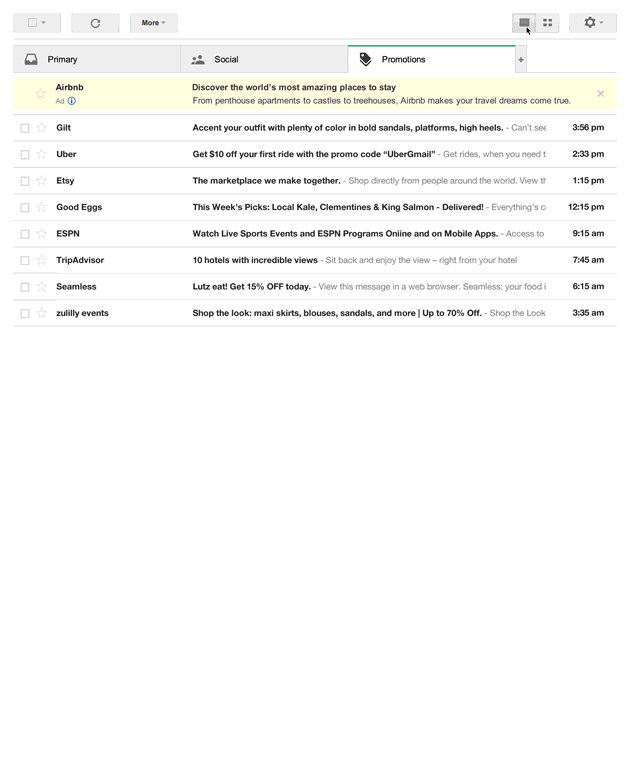It is no secret that Google makes frequent changes to all its products. The algorithms that underlie the search engine are constantly being changed and tweaked, and the businesses that rely on search results struggle to keep up with those changes.
Similarly, businesses who utilize email marketing need to keep track of the changes Google makes to its flagship Gmail product. Gmail remains one of the leading email platforms in the world, and marketers need to be aware of all the changes Google makes to the product.
As with previous changes to Gmail, it is important for email marketers not to overreact. Many marketers panicked when Google added an unsubscribe option to Gmail, convinced that the age of email marketing was over. Those predictions turned out to be exaggerated to say the least, and marketers quickly found out that email was still alive and well.
Email marketers can use that past experience as they adjust to the new grid view change. While this change certainly bears watching, it is not a cause for panic. Marketers who are able to successfully adjust to the change can do very well indeed.
What is the New Gmail Grid View?
The new Gmail grid view is designed to provide a more visual and eye-catching experience for users. Grid View chooses images from within the emails and displays those images as tiles, similar to what Pinterest users see when they log on.

This change means that Gmail users are able to look inside all of the emails on the Gmail Promotions tab, all without actually having to open the messages. This change is certainly convenient for users, but what does it mean for email marketers?
What Benefits Does the Change Hold for Email Marketers?
As with previous Gmail changes, the new Grid View feature offers both opportunities and risks to email marketers. First of all, it is important to remember that the Grid View is still in its field trial stage, and that means only certain users can currently see it. Users who do have Grid View available experience a different, and far more visual, email inbox.
The fact that the new Gmail Grid View uses embedded images to represent messages means that choosing the right images is more important than ever before. Marketers need to choose their images carefully and make sure those images properly display across a wide variety of email platforms, including Gmail.
What Issues Might the New Grid View Cause?
It appears that the new Gmail Grid View will allow email marketers to choose the image that represents their messages, and that could end up being a big plus. If email marketers can indeed choose their images, they could potentially increase both open rates and deliverability.
Since the new Gmail Grid View feature appears to be based at least in part on Pinterest, email marketers would do well to familiarize themselves with this platform. The visual style of Pinterest has proven very appealing to web users, and smart email marketers can build those visuals into their own marketing campaigns.
Some marketers responded to the original rollout of the Promotions tab by asking recipients to add them to the Inbox, but those marketers may want to rethink that approach. If Google does indeed roll out Grid View to all its users, email marketers may want to ask users to add them to the Promotions tab. That change will actually make their messages more visible and cause response rates to rise accordingly.
Only time will tell what impact the Grid View feature has on Gmail users and on email marketers. One thing is certain, however. Google will continue to make changes to both its search engine algorithms and its Gmail platform, and email marketers will need to stay informed about all new changes.